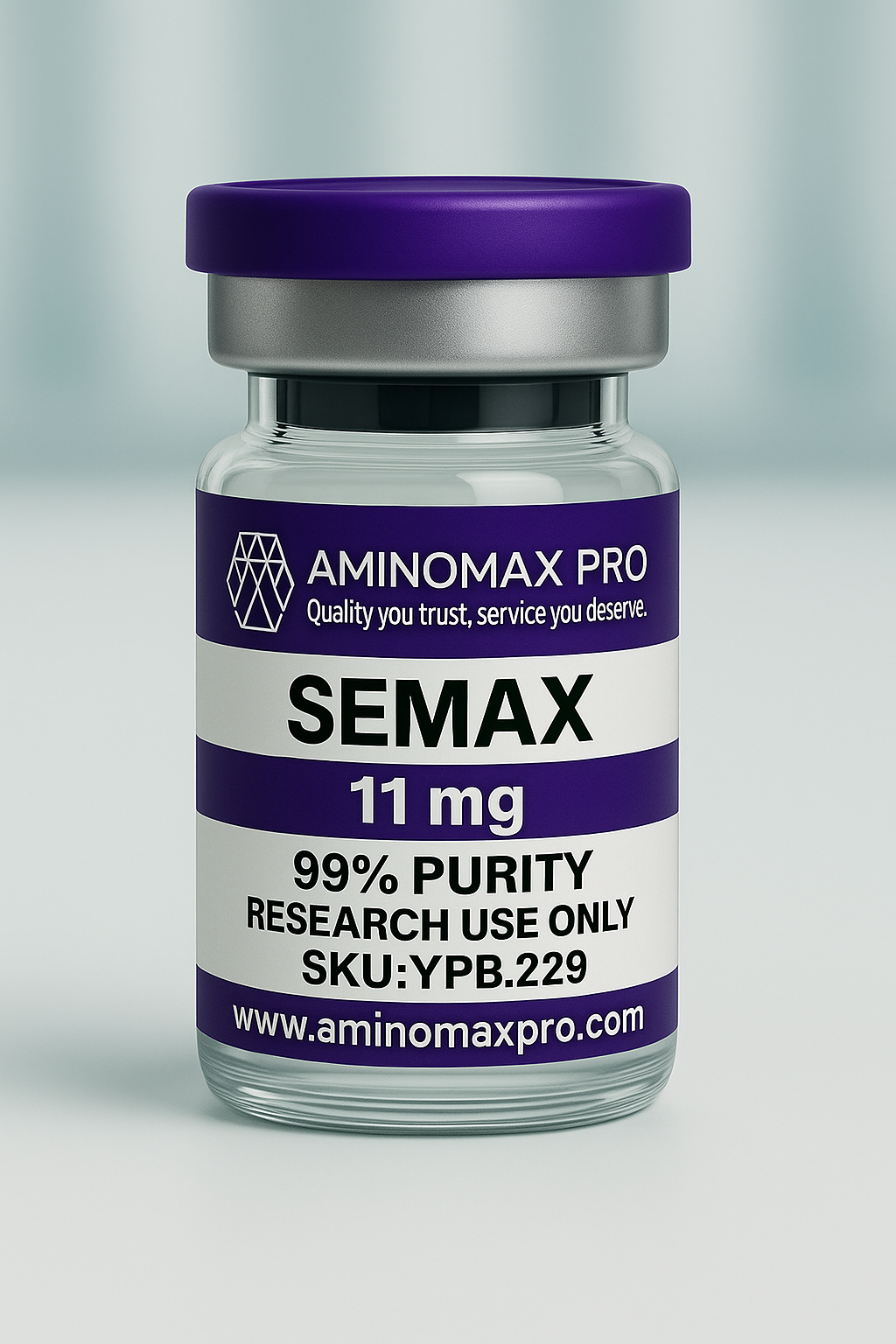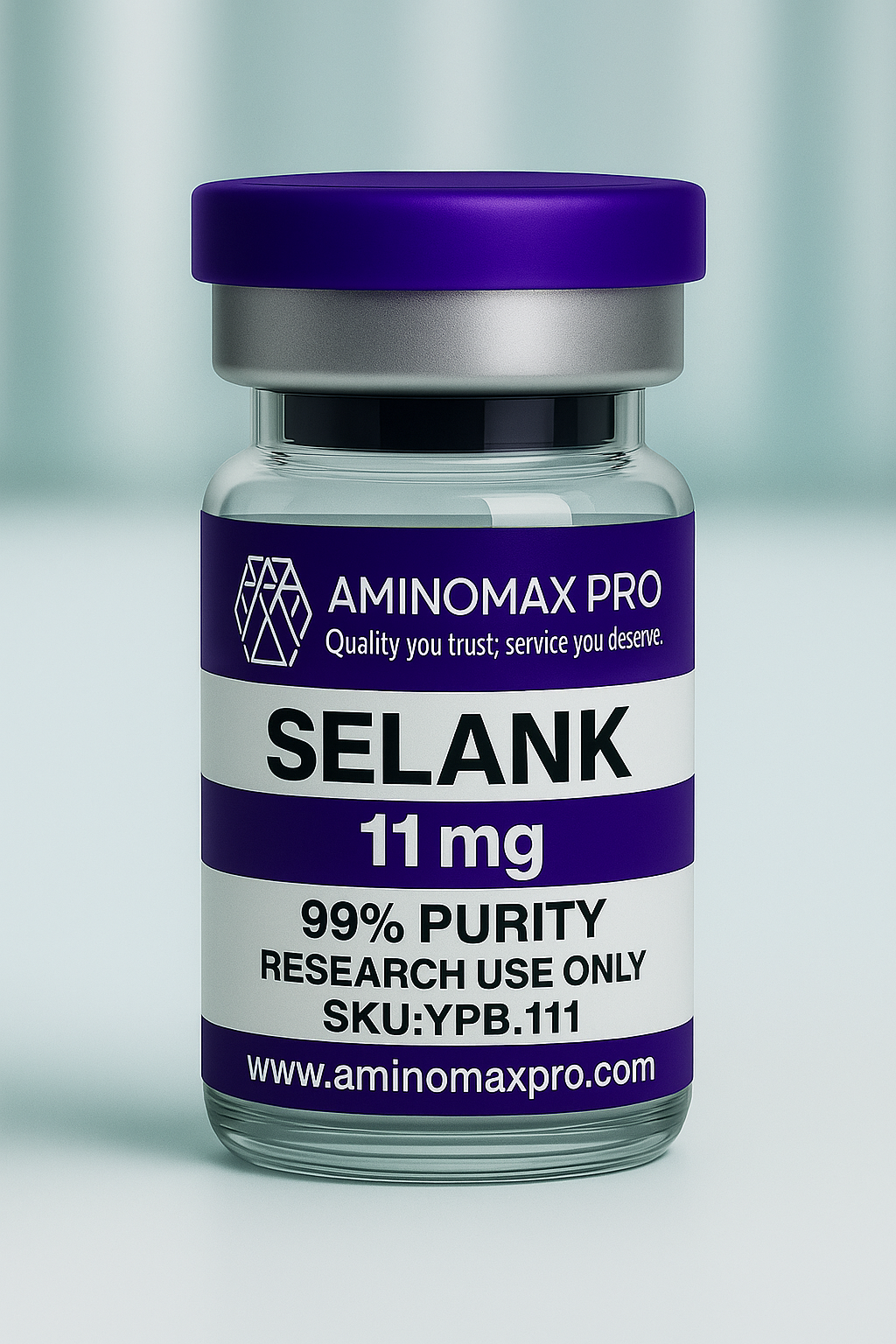Description
Semax — Advanced Biochemical Mechanism Profile
(Synthetic ACTH(4-10) analog; neuropeptide research compound)
Semax is a heptapeptide fragment derived from ACTH(4-10) engineered to retain neuromodulatory and neurotrophic signaling properties without interacting with classical melanocortin receptors in the same manner as ACTH.
In neuronal and glial research models, Semax has been shown to modulate BDNF expression, dopaminergic signaling, and oxidative-stress pathways through transcriptional and second-messenger regulation.
✅ 1. Primary Molecular Interactions (In-Vitro Evidence)
A. Neurotrophin Pathway Modulation
Studies demonstrate that Semax upregulates:
-
BDNF
-
GDNF
-
NGF-related receptor signaling
This appears to involve:
-
cAMP → PKA → CREB phosphorylation
-
ERK1/2 activation
-
Increased transcription of neuroplasticity-associated genes
B. Dopaminergic Regulation
Semax influences dopamine turnover and transport by modulating:
-
Tyrosine hydroxylase (TH)
-
Dopamine transporter (DAT, SLC6A3)
-
Monoamine oxidase (MAOA)
Resulting effects observed in neuronal cultures:
-
↑ Dopaminergic synaptic signaling
-
Altered release and reuptake dynamics
C. Antioxidant & Anti-Inflammatory Gene Expression
Semax has been shown to reduce expression of inflammatory mediators and enhance antioxidant coding genes via:
-
NF-κB pathway inhibition
-
Upregulation of Nrf2-associated genes
-
Improvement of endogenous antioxidant enzyme transcription
✅ 2. Intracellular Signaling Pathways
A. ERK/MAPK Cascade
-
Semax stimulates Ras → Raf → MEK → ERK1/2
-
ERK1/2 translocates to the nucleus
-
Triggers transcription of immediate early genes and neurotrophic factors
ERK-responsive genes commonly monitored:
-
FOS
-
JUN
-
EGR1
-
BDNF
B. cAMP → PKA → CREB
-
Semax elevates cAMP in neuronal cells
-
Activates PKA
-
Phosphorylates CREB
-
CREB regulates promoters for:
-
BDNF
-
NR4A1
-
Synaptic plasticity genes
-
C. Anti-oxidant / Cytokine Pathways
-
↓ TNF-α, IL-6, IL-1β
-
↑ SOD2, CAT, GPX1
-
Linked to NF-κB inhibition and Nrf2 upregulation
✅ 3. Second Messengers & Enzymatic Outputs
| Component | Mechanistic Effect |
|---|---|
| cAMP ↑ | Drives PKA/CREB transcription |
| Ca²⁺ flux | Alters neurotransmitter release profiles |
| ERK1/2 phosphorylation | Enhances neuroplastic gene expression |
| Nrf2 activation | Antioxidant gene transcription |
| NF-κB suppression | Reduced pro-inflammatory cytokine signaling |
✅ 4. Representative Gene Targets
| Signaling Domain | Genes Commonly Assessed in Research |
|---|---|
| Neurotrophic | BDNF, GDNF, NGF, NTRK2 |
| Plasticity / Memory | CREB1, ARC, SYN1, CAMKII |
| Dopaminergic | TH, SLC6A3 (DAT), MAOA |
| Oxidative Stress | SOD2, CAT, GPX1, NRF2-target genes |
| Cytokine Modulation | TNFA, IL1B, IL6, IL10, NFKB1 |
✅ Mechanistic Summary
-
Synthetic ACTH(4-10) analog
-
Modulates cAMP/PKA/CREB and ERK1/2 pathways
-
Upregulates BDNF, GDNF, and synaptic-plasticity genes
-
Influences dopaminergic turnover and transporter expression
-
Regulates oxidative-stress and cytokine gene transcription
Research-Only Classification
Semax is provided solely for controlled in-vitro laboratory research.
Not approved for human or animal administration, therapeutic use, or biological application outside research settings.



